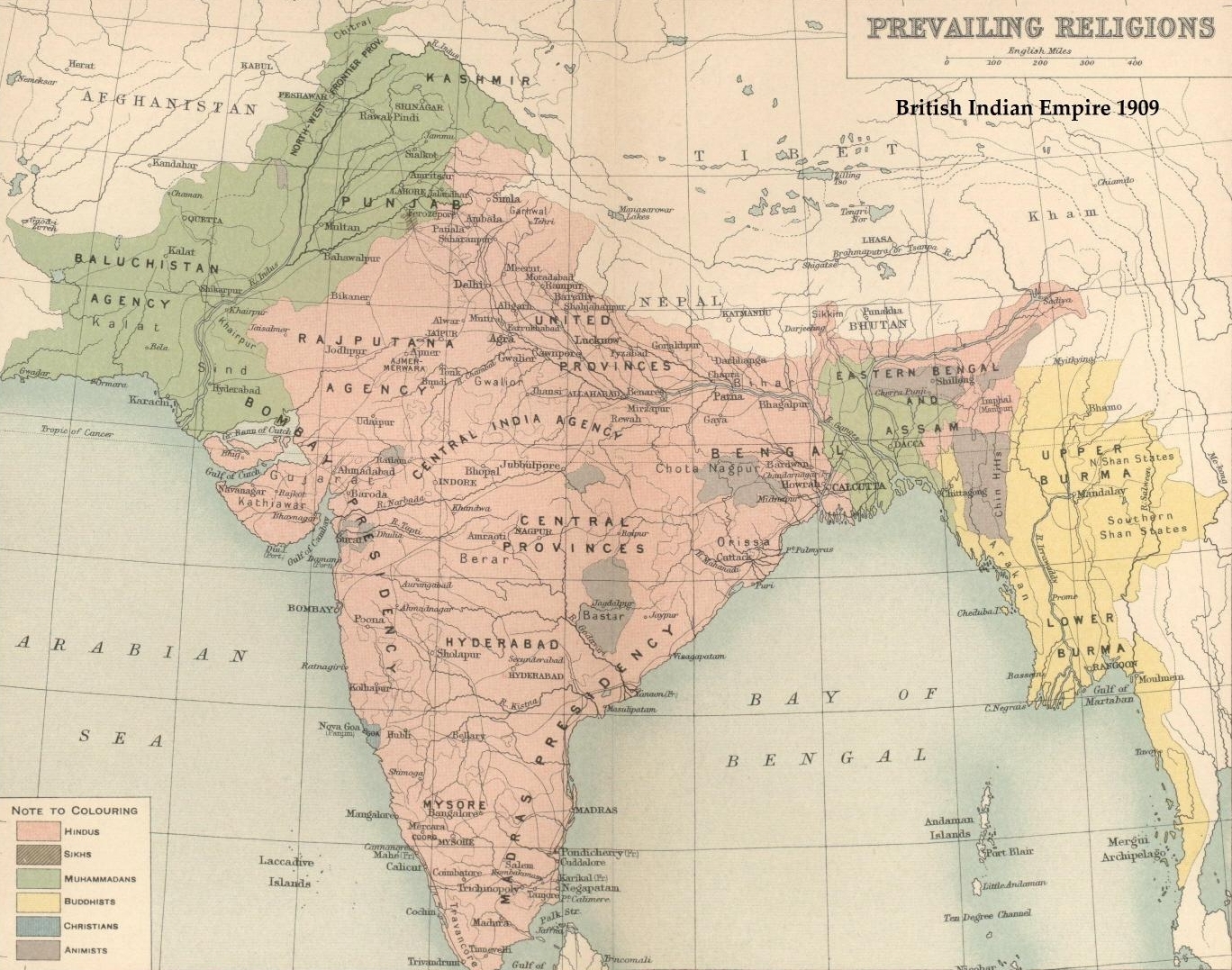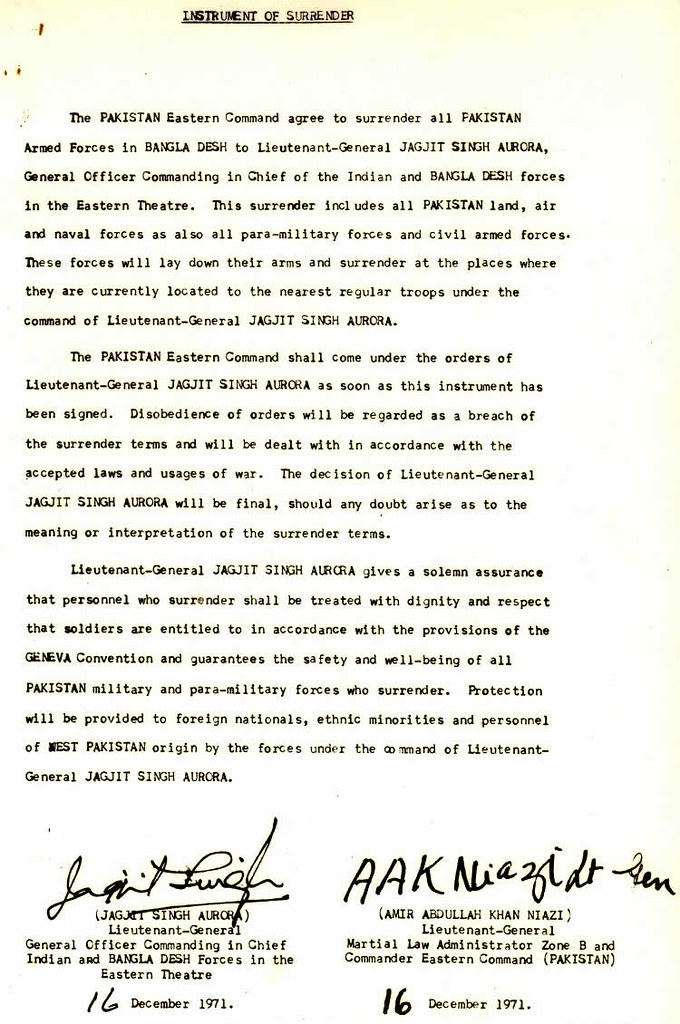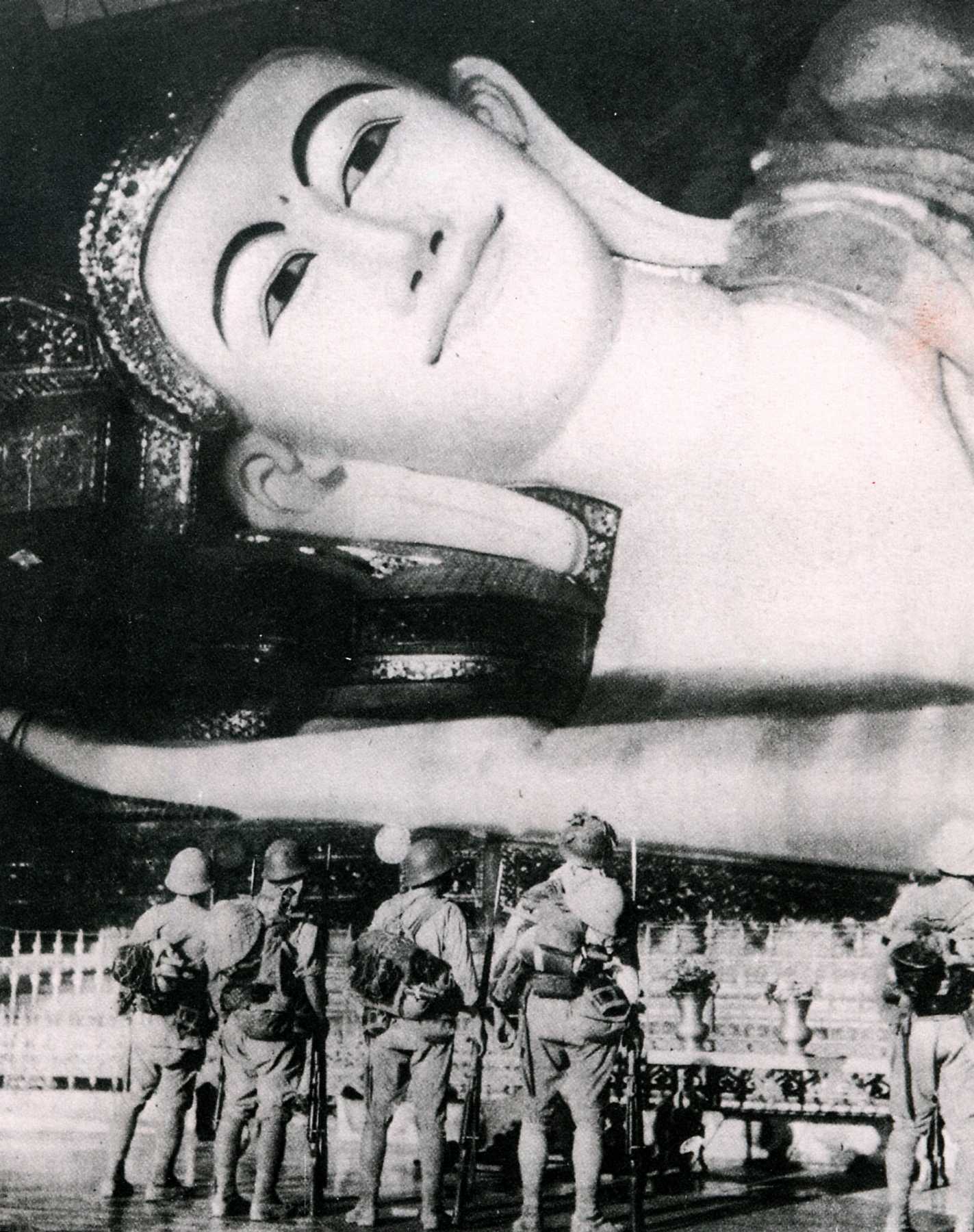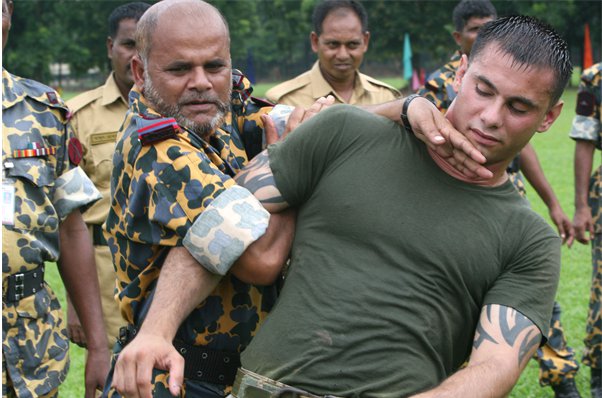|
Battle Of Shiromoni
The Battle of Shiromoni (Bengali: শিরোমণির যুদ্ধ) (13–17 December 1971) was fought during the Bangladesh Liberation War and the Indo-Pakistani War of 1971 between the Pakistan Army and the joint forces of the Mukti Bahini, Bangladesh and Indian Army. This was one of the last battles of the Bangladesh Liberation War which continued till 17 December 1971, even though the A.A.K. Niazi, commander of all Pakistani Forces in Bangladesh had already surrendered on 16 December 1971. Background On 31st March 1971 i.e. five days after Bangladesh declared independence from Pakistan and waged war against the Pakistani military, members of the Border Guards Bangladesh, East Pakistan Rifles and other Bengali armed forces (who now formed the Mukti Bahini, Mukti Bahini of Bangladesh) from Khulna, Satkira and Jessore were able to liberate the city of Jessore from the occupying Pakistani military. Even though the city was liberated, one of the main power bases of the Pak ... [...More Info...] [...Related Items...] OR: [Wikipedia] [Google] [Baidu] |
Bangladesh Liberation War
The Bangladesh Liberation War ( bn, মুক্তিযুদ্ধ, , also known as the Bangladesh War of Independence, or simply the Liberation War in Bangladesh) was a revolution and War, armed conflict sparked by the rise of the Bengali nationalism, Bengali nationalist and self-determination movement in East Pakistan, which resulted in the independence of Bangladesh. The war began when the Pakistani Military dictatorship, military junta based in West Pakistan—under the orders of Yahya Khan—launched Operation Searchlight against the people of East Pakistan on the night of 25 March 1971, initiating the 1971 Bangladesh genocide, Bangladesh genocide. In response to the violence, members of the Mukti Bahini—a guerrilla resistance movement formed by Bengali military, paramilitary and civilians—launched a mass Guerrilla warfare, guerrilla war against the Pakistani military, liberating numerous towns and cities in the initial months of the conflict. At first, the Pakis ... [...More Info...] [...Related Items...] OR: [Wikipedia] [Google] [Baidu] |
Indian Army
The Indian Army is the land-based branch and the largest component of the Indian Armed Forces. The President of India is the Supreme Commander of the Indian Army, and its professional head is the Chief of Army Staff (COAS), who is a four-star general. Two officers have been conferred with the rank of field marshal, a five-star rank, which is a ceremonial position of great honour. The Indian Army was formed in 1895 alongside the long established presidency armies of the East India Company, which too were absorbed into it in 1903. The princely states had their own armies, which were merged into the national army after independence. The units and regiments of the Indian Army have diverse histories and have participated in several battles and campaigns around the world, earning many battle and theatre honours before and after Independence. The primary mission of the Indian Army is to ensure national security and national unity, to defend the nation from external aggression an ... [...More Info...] [...Related Items...] OR: [Wikipedia] [Google] [Baidu] |
Battles Of The Bangladesh Liberation War
A battle is an occurrence of combat in warfare between opposing military units of any number or size. A war usually consists of multiple battles. In general, a battle is a military engagement that is well defined in duration, area, and force commitment. An engagement with only limited commitment between the forces and without decisive results is sometimes called a skirmish. The word "battle" can also be used infrequently to refer to an entire operational campaign, although this usage greatly diverges from its conventional or customary meaning. Generally, the word "battle" is used for such campaigns if referring to a protracted combat encounter in which either one or both of the combatants had the same methods, resources, and strategic objectives throughout the encounter. Some prominent examples of this would be the Battle of the Atlantic, Battle of Britain, and Battle of Stalingrad, all in World War II. Wars and military campaigns are guided by military strategy, whereas bat ... [...More Info...] [...Related Items...] OR: [Wikipedia] [Google] [Baidu] |
History Of India
According to consensus in modern genetics, anatomically modern humans first arrived on the Indian subcontinent from Africa between 73,000 and 55,000 years ago. Quote: "Y-Chromosome and Mt-DNA data support the colonization of South Asia by modern humans originating in Africa. ... Coalescence dates for most non-European populations average to between 73–55 ka." However, the earliest known human remains in South Asia date to 30,000 years ago. Settled life, which involves the transition from foraging to farming and pastoralism, began in South Asia around 7000 BCE. At the site of Mehrgarh presence can be documented of the domestication of wheat and barley, rapidly followed by that of goats, sheep, and cattle. By 4500 BCE, settled life had spread more widely, and began to gradually evolve into the Indus Valley civilisation, an early civilisation of the Old World, which was contemporaneous with Ancient Egypt and Mesopotamia. This civilisation flourished between 2500 BCE and 1900 ... [...More Info...] [...Related Items...] OR: [Wikipedia] [Google] [Baidu] |
Pakistani Instrument Of Surrender
The Pakistani Instrument of Surrender ( bn, পাকিস্তানের আত্মসমর্পণের দলিল, translit=Pākistānēr Atmasamarpaṇēr Dalil) was a written agreement between India, Pakistan, and the Provisional Government of Bangladesh that enabled the capitulation of 93,000 West Pakistani troops of the Armed Forces Eastern Command on 16 December 1971, thereby ending the Bangladesh Liberation War and the Indo-Pakistani War of 1971 with the formal establishment of the People's Republic of Bangladesh in erstwhile East Pakistan. It was the largest surrender in terms of number of personnel since the end of World War II. The event, known as Victory Day, is celebrated as a national holiday in Bangladesh; it is also celebrated by the Indian Armed Forces. Surrender ceremony The surrender ceremony took place at the Ramna Race Course in Dacca, East Pakistan (now Bangladesh), on 16 December 1971: A. A. K. Niazi of the Pakistan Army formally surrendere ... [...More Info...] [...Related Items...] OR: [Wikipedia] [Google] [Baidu] |
SM Babar Ali
SM Babar Ali () is a Awami League In Urdu language, Awami is the adjectival form for '' Awam'', the Urdu language word for common people. The adjective appears in the following proper names: *Awami Colony, a neighbourhood of Landhi Town in Karachi, Sindh, Pakistan *Awami Front, wa ... politician in Bangladesh and the former Member of Parliament of Khulna-9. Career Ali was elected to parliament from Khulna-9 as an Awami League candidate in 1973. References Awami League politicians Living people 1st Jatiya Sangsad members Year of birth missing (living people) Brajalal College alumni {{Khulna-politician-stub ... [...More Info...] [...Related Items...] OR: [Wikipedia] [Google] [Baidu] |
Japanese Occupation Of Burma
The Japanese occupation of Burma was the period between 1942 and 1945 during World War II, when Burma was occupied by the Empire of Japan. The Japanese had assisted formation of the Burma Independence Army, and trained the Thirty Comrades, who were the founders of the modern Armed Forces (''Tatmadaw''). The Burmese hoped to gain support of the Japanese in expelling the British, so that Burma could become independent.Micheal Clodfelter. Warfare and Armed Conflicts: A Statistical Reference to Casualty and Other Figures, 1500–2000. 2nd Ed. 2002 . p. 556Werner Gruhl, Imperial Japan's World War Two, 1931–1945 Transaction 2007 (Werner Gruhl is former chief of NASA's Cost and Economic Analysis Branch with a lifetime interest in the study of the First and Second World Wars.) In 1942, Japan invaded Burma and nominally declared the colony independent as the ''State of Burma'' on 17 May 1942. A puppet government led by Ba Maw was installed. However, many Burmese began to believe the ... [...More Info...] [...Related Items...] OR: [Wikipedia] [Google] [Baidu] |
Border Guards Bangladesh
Border Guards Bangladesh (BGB) are a paramilitary force responsible for the border security of Bangladesh. The force is known as "The Vigilant Sentinels of the National Frontier". The BGB is entrusted with the responsibility to defend the border of Bangladesh. It was formerly known as the Bangladesh Rifles (BDR). BGB boasts a military history spanning over two centuries. During peacetime this force is also responsible for anti-smuggling operations, investigating cross border crime and extending governmental authority to remote and isolated areas. From time to time BGB has also been called upon to assist the administration in the maintenance of internal law & order, relief and rehabilitation work after any kind of natural disaster. During wartime BGB comes under the control of the Ministry of Defence as an auxiliary force to the Bangladesh Army. History Formation and pre 1947 Ramgarh Local Battalion The Ramgarh Local Battalion was established on 29 June 1795 at the city of Ra ... [...More Info...] [...Related Items...] OR: [Wikipedia] [Google] [Baidu] |
Pakistan Army
The Pakistan Army (, ) is the Army, land service branch of the Pakistan Armed Forces. The roots of its modern existence trace back to the British Indian Army that ceased to exist following the partition of India, Partition of British India, which occurred as a result of the Indian Independence Act 1947, 1947 Indian Independence Act of the United Kingdom. According to statistics provided by the International Institute for Strategic Studies (IISS) in 2021, the Pakistan Army has approximately 560,000 active duty, active-duty personnel, supported by the #Combat maneuvering organizations, Army Reserve and National Guard of Pakistan, National Guard. Pakistani citizens can enlist for voluntary military service upon reaching 16 years of age, but cannot be deployed for combat until the age of 18 in accordance with the Constitution of Pakistan. The primary objective and constitutional mission of the Pakistan Army is to ensure the national security and national unity of Pakistan by defend ... [...More Info...] [...Related Items...] OR: [Wikipedia] [Google] [Baidu] |
Flag Of The Pakistani Army
A flag is a piece of fabric (most often rectangular or quadrilateral) with a distinctive design and colours. It is used as a symbol, a signalling device, or for decoration. The term ''flag'' is also used to refer to the graphic design employed, and flags have evolved into a general tool for rudimentary signalling and identification, especially in environments where communication is challenging (such as the maritime environment, where semaphore is used). Many flags fall into groups of similar designs called flag families. The study of flags is known as "vexillology" from the Latin , meaning "flag" or "banner". National flags are patriotic symbols with widely varied interpretations that often include strong military associations because of their original and ongoing use for that purpose. Flags are also used in messaging, advertising, or for decorative purposes. Some military units are called "flags" after their use of flags. A ''flag'' (Arabic: ) is equivalent to a brigad ... [...More Info...] [...Related Items...] OR: [Wikipedia] [Google] [Baidu] |
45th Cavalry (India)
45 Cavalry is an armoured regiment in the Armoured Corps of the Indian Army. The regiment distinguished itself in operations during the 1971 Indo-Pakistan War winning one Maha Vir Chakra. Raising The first 45th Cavalry was formed in August 1918 from *a squadron of 20th Deccan Horse *a squadron of 34th Prince Albert Victor's Own Poona Horse *a squadron of 36th Jacob's Horse *a squadron of 38th King George's Own Central India Horse It was disbanded in 1919. It was re-raised in April 1941 at Meerut under Major CPJ Prioleau. The troops were Sikhs, Pathans and Dogras drawn from the 13th Lancers, Scinde Horse & Guides Cavalry and equipped with Stuart light tanks. They served in Burma as part of 50th Indian Tank Brigade, entering Burma in December 1944 in the Arakan and returning in March 1945 to India to upgrade to Sherman tanks. Post war, the regiment was disbanded in April 1946. The Regiment was raised again as an Indian Cavalry Regiment at Kandahar Lines, Delhi Cantonment by ... [...More Info...] [...Related Items...] OR: [Wikipedia] [Google] [Baidu] |
50th Parachute Brigade (India)
The 50th Parachute Brigade is a brigade-sized formation of the Indian Army. Its main force is formed of battalions of the Parachute Regiment. It consists of 2 Airborne battalions, supported by units of the Regiment of Artillery, the Corps of Engineers and a Para field hospital. History The brigade was initially raised as part of the Indian Army during World War II. It was formed in October 1941, during the Second World War, as an independent parachute brigade. Later, it was one of two parachute brigades in the 44th Indian Airborne Division. The brigade took part in the Battle of Sangshak, which has been credited with delaying the Japanese forces moving up for the Battle of Imphal which allowed British and Indian reinforcement to reach Kohima. After formation, the brigade had the following structure: * Brigade Headquarters * Brigade Signal Section * 151st Battalion The Parachute Regiment (British) * 152nd Parachute Battalion (Indian) * 153rd Parachute Battalion (Gurkha) * 41 ... [...More Info...] [...Related Items...] OR: [Wikipedia] [Google] [Baidu] |



.png)



